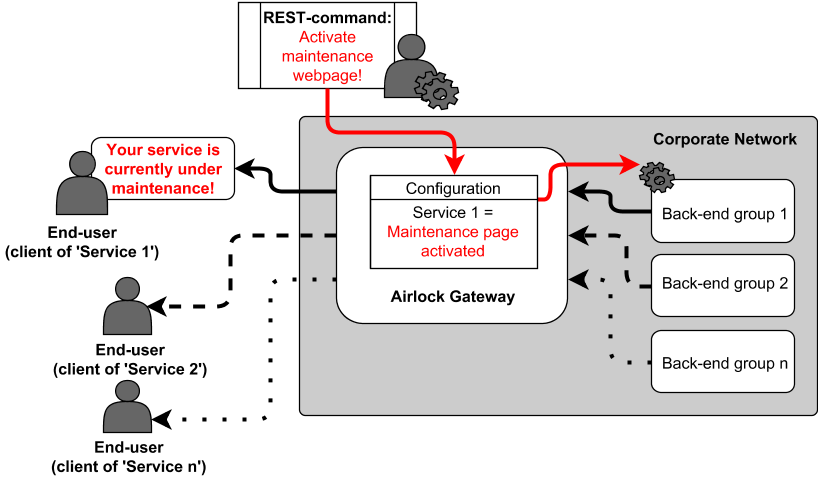Multitenancy feature
The multitenancy feature allows users with tenant rights to perform certain administrative self-services via REST interface while sharing a single Airlock Gateway installation. It has been designed with essential maintenance functions for tenant-users in mind, while the main system administration stays under full control of the Airlock Gateway administrator.
Multitenancy can effectively distribute the load of an Airlock Gateway system-administrator for common basic maintenance tasks by offering REST-access to tenant-users with decided administrative responsibilities.
- Tenant-users are identified by JSON Web Token (JWT). Their role is truncated to read and write their own configuration part only!
- Through the tokens, the scope of services can be defined within the Role and rights management for tenant-users.
Typical applications
- Enable a maintenance page as a tenant-user.
- Uninterrupted maintenance as a tenant-user.
Solution design
For secure data and information separation, multitenancy requires authentication for each tenant-user. In our solution, we use a JSON Web Token (JWT) for authentication purposes towards the REST interface of the Airlock Gateway installation.
Simplified process description
Exemplary task:
Service 1 needs to be updated. During this process, the service will be unavailable to end-users of tenant-user 1. For the duration of maintenance, all end-users of Service 1 should be informed via a maintenance webpage.- The tenant-user sends an HTTP-request to the Airlock Gateway. This request contains the tenant-users JWT and the REST-command.
- The Airlock Gateway authenticates the tenant-user's REST-command by the JWT.
- With successful authentication, the REST-command changes the Airlock Gateway configuration. It activates the maintenance webpage for Service 1.
- For all end-users of Service 1, the maintenance webpage shows up. Other services or end-users of other services will not be affected.
